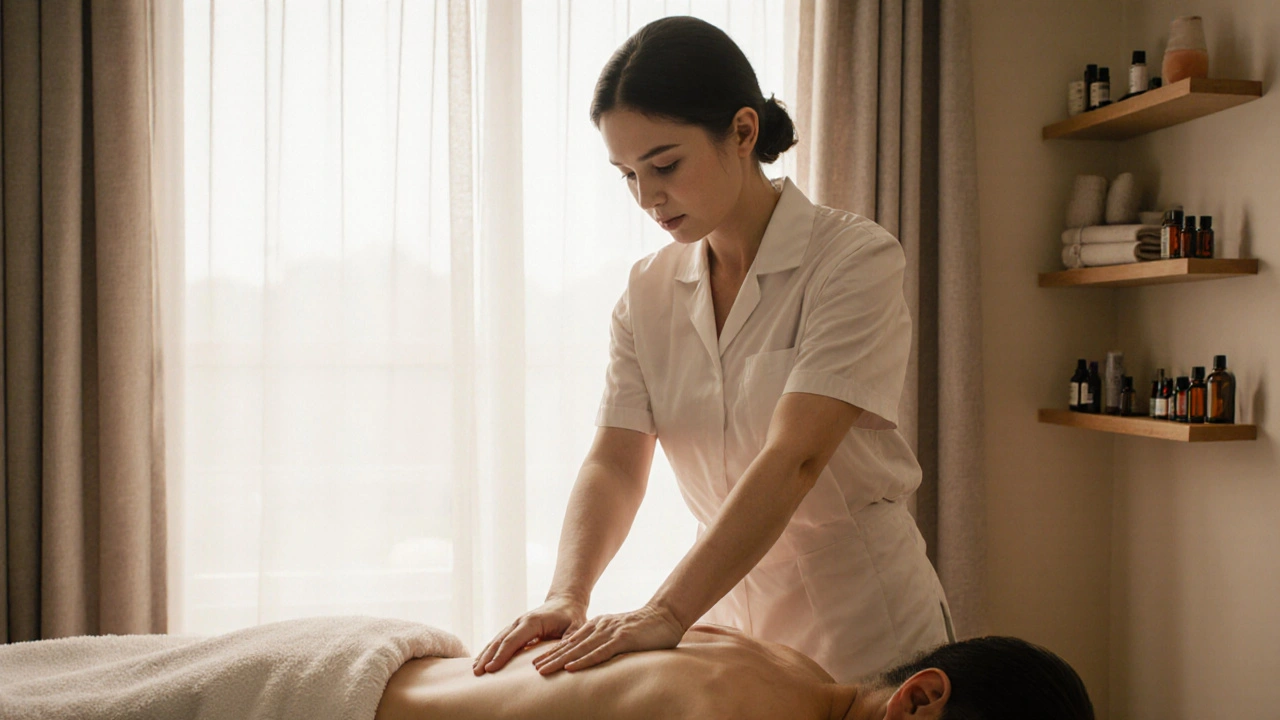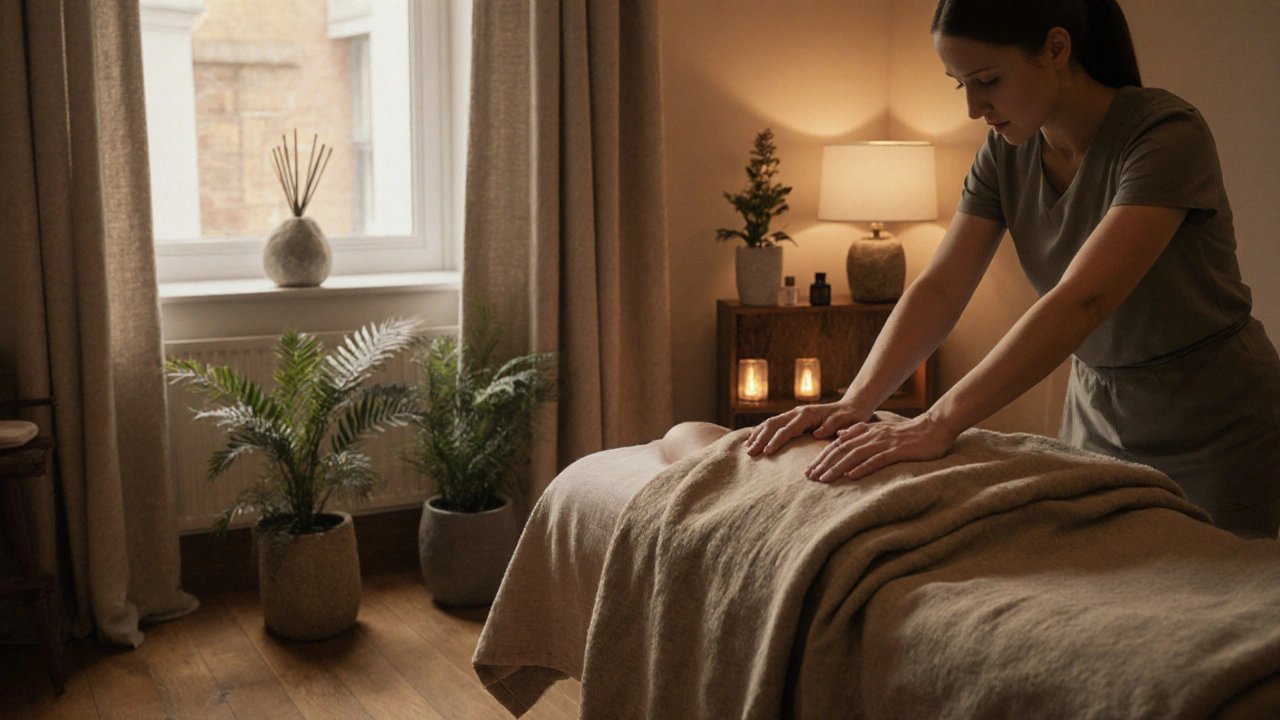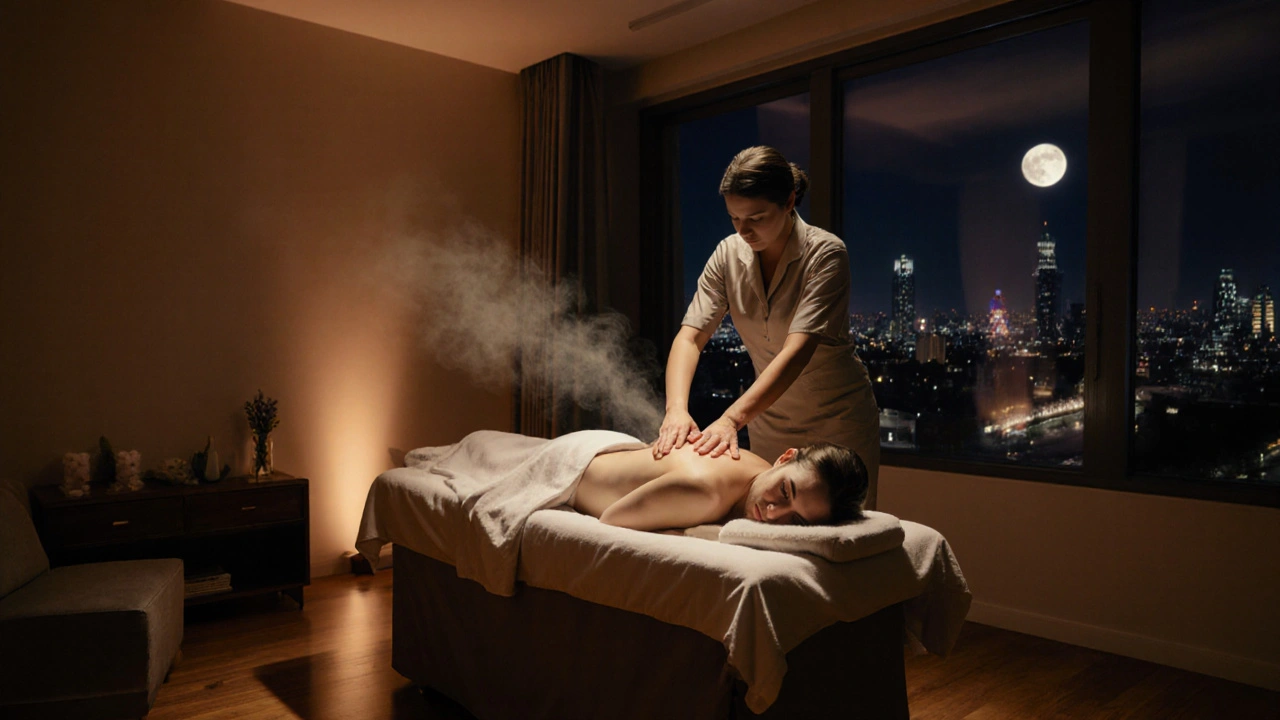A massage therapist doesn't just relieve muscle tension - they help reset your nervous system, reduce stress, and support long-term wellness. Discover how professional massage therapy fits into your health routine.

- Created by: Liam Redgate
- Completed on: 17 Jun 2025
- Categories: Swedish Massage
No one enjoys feeling like there’s a drumline in their skull. Headaches and migraines can throw your whole day off, and if you’re reading this, maybe painkillers aren’t cutting it. But have you thought about trying a Swedish massage? People often think of this as just a way to relax, but there might be more to it when it comes to head pain.
Swedish massage isn’t some mysterious or exotic technique. It’s all about smooth, gentle strokes that help your muscles loosen up. When your neck, shoulders, and scalp are tight, those tension headaches love to creep in. A good Swedish massage can target those stubborn knots and ease the pressure, which could actually prevent some headaches or make them less intense when they do strike.
One thing to know: Swedish massage isn’t a cure-all. But some folks have noticed a big difference after a session or two—less tension and even fewer migraines. If you’re tired of popping pills and want to try something natural, safe, and relaxing, this might be right up your alley.
- Key Facts and Quick Answers
- How Swedish Massage Works for Headaches
- What to Expect During a Session
- Finding a Massage Therapist Near You
Key Facts and Quick Answers
If you’re in a rush and just want the bottom line, here it is: Swedish massage can actually help manage headaches and migraines for a lot of people. Here’s what you should know right away:
- Swedish massage focuses on relaxing the muscles in your neck, shoulders, and scalp—where most tension headaches start.
- Studies show regular sessions can cut down both the frequency and severity of tension headaches. One small clinical trial even saw sufferers reporting up to 50% fewer headaches over four weeks of massage therapy.
- No, it’s not a miracle cure for migraines—but it can reduce muscle tightness and stress, and those are common triggers.
- It’s safe for most people, but if your headaches are sudden, intense, or linked to other health issues, see your doctor first.
If you’re wondering about the evidence, here’s a quick look at what research and surveys have found:
| Claim | What Studies Found |
|---|---|
| Relieves Tension Headaches | Frequent Swedish massage sessions lowered headache days by 30-50% for most participants (Journal of Bodywork & Movement Therapies, 2018). |
| Helps With Migraine Symptoms | Many people report milder migraines after regular massages, but it is more about stress and muscle relief than stopping migraines completely. |
| Safe/Side Effects | Very few side effects. Some might feel sore for a day, but serious issues are rare if you pick a qualified therapist. |
You won’t have to prep much before your first massage. Wear comfy clothes, and tell your massage therapist if you’re having a rough headache day. Remember: drinking water after a session helps flush out toxins and can prevent that post-massage ‘hangover’ feeling. If you’re pregnant or have a medical condition, double-check with your doctor before you book.
How Swedish Massage Works for Headaches
Most headaches come from tension—whether it’s slouching at your desk, clenching your jaw, or just living a stress-filled life. Swedish massage zeroes in on the places where tension usually hides: your neck, shoulders, and upper back. When these muscles get tight, blood flow can slow down, and that’s when pounding headaches start to make an entrance.
The magic in Swedish massage is all about using gentle, sweeping strokes called “effleurage” and kneading known as “petrissage.” These moves aren’t random. They help boost circulation, lower muscle tightness, and signal your body to chill out. Think of it as flipping the switch on your body’s stress response and inviting relaxation to take over.
Here’s what’s actually going on when you get a Swedish massage for headaches:
- Muscle Relaxation: Sore and tense neck or scalp muscles get released, making it less likely for headaches to creep up.
- Better Blood Flow: Massage increases circulation. More blood gets to your brain and tissues, which can help chase away headache pain.
- Lower Stress Hormones: Cortisol and adrenaline go down, so you feel calmer and more able to handle pain signals.
- Trigger Point Work: Sometimes therapists find tight spots (trigger points) that shoot pain into your head. Gentle pressure here can make a huge difference.
Wondering if there’s any real proof behind all this? In a 2022 study published in the "Journal of Bodywork and Movement Therapies," people with migraines who got Swedish massage twice a week for four weeks reported 43% fewer headache days by the end. That doesn’t mean it works for everyone, but the numbers are promising.
| Benefit | How It Helps Headaches |
|---|---|
| Muscle Relaxation | Reduces tightness in neck and shoulders, a common headache trigger |
| Improved Circulation | Brings fresh oxygen to brain and muscles, easing pain |
| Less Stress | Lowers cortisol levels, which can help prevent tension headaches |
| Less Migraine Frequency | Some people report fewer migraines after regular sessions |
If you get headaches tied to tight muscles or stress—and who doesn’t these days?—Swedish massage might be worth a shot. It’s safe for most people, but always let your therapist know what you’re dealing with so they can focus where you need relief most.

What to Expect During a Session
Walking into your first Swedish massage session for headache relief? Here’s the real deal—no surprises, just the facts.
Right off the bat, your therapist will talk with you about your headaches or migraines. Be ready to share details: how often they hit, where the pain shows up, what might trigger them, and if you have any other health issues. Therapists use this info to focus on the right spots, especially your neck, shoulders, and scalp.
- You’ll usually lie on a padded massage table, with relaxing music in the background. Most folks undress to their comfort level—just underwear under a sheet or blanket—but it’s totally your call.
- The massage therapist uses oil or lotion so their hands glide easily over your skin. This helps them work on tense muscles without pulling or discomfort.
- Expect long, gentle strokes, circular finger movements, and some light kneading. With headaches and migraines, therapists avoid deep-tissue pressure and stick to lighter, soothing techniques.
- The session can last anywhere from 30 minutes (just upper body) to an hour or more for full-body relaxation. If your main worry is head pain, therapists often spend more time on your upper back, neck, and scalp.
How do people usually feel afterwards? Most say their muscles feel looser and pain levels drop. Some notice headache symptoms fade, while others feel calmer and less stressed, which can help reduce migraine flare-ups.
| Outcome | Reported Percentage |
|---|---|
| Muscle relaxation noticed | 90% |
| Headache intensity reduced | 75% |
| Sleep quality improved | 60% |
| Immediate pain-free response | 40% |
Remember, every session is a little different—no two headaches are the same either. Let your therapist know if something feels off or if you need extra focus on a specific area. If you’re hoping for headache or migraine relief, don’t be shy—get specific about your needs.
And here’s a quick tip: Drink a glass of water after the session. It helps your muscles recover and makes the most of the Swedish massage benefits for headaches or migraines.
Finding a Massage Therapist Near You
So you’re ready to give Swedish massage a shot for your headaches or migraines—now what? First things first, you want a therapist who actually knows their stuff, not just someone with a fancy website. Start by searching for licensed massage therapists in your city. In the US, that usually means they’re certified by the National Certification Board for Therapeutic Massage & Bodywork (NCBTMB) or meet your state’s massage requirements. You can visit official sites like AMTA (American Massage Therapy Association) or ABMP to search for legit therapists in your area.
Don’t just pick the first name you see. Check out customer reviews on Google, Yelp, or Facebook. People don’t hold back about their experiences, so you’ll get a good idea of who’s worth your time. Online booking tools like Mindbody or Booksy are handy for checking schedules and prices before you commit.
If you’re looking for help with headaches or migraines specifically, let your therapist know up front. Not every therapist is used to dealing with this, so you want someone who’s comfortable working around the neck, shoulders, and scalp—those trouble spots where tension builds up.
- Ask about their experience with headache or migraine clients.
- Check if they offer add-ons like aromatherapy or warm towels, which some folks find extra soothing for head pain.
- Look for clinics near your work or home, so regular sessions aren’t a hassle.
- If you have insurance, see if your plan covers massage therapy (some do, especially if a doctor recommends it).
For quick visuals, a lot of therapists have Instagram profiles showing their space and even testimonials. It’s a smart way to judge the vibe before booking. If you want to dive deeper, try local directories or city Facebook groups—people love swapping recommendations for reliable places. Bottom line: take your time, do a bit of homework, and you’re more likely to find a therapist who can help you shake off those headaches.
Find the best massage near you in London with honest reviews, pricing guides, and tips to choose the right therapist. No fluff-just real relief for tired bodies.
Discover how Swedish massage can naturally relieve insomnia, improve sleep quality, and lower stress hormones. Learn benefits, pricing, and where to find trusted therapists in London.



